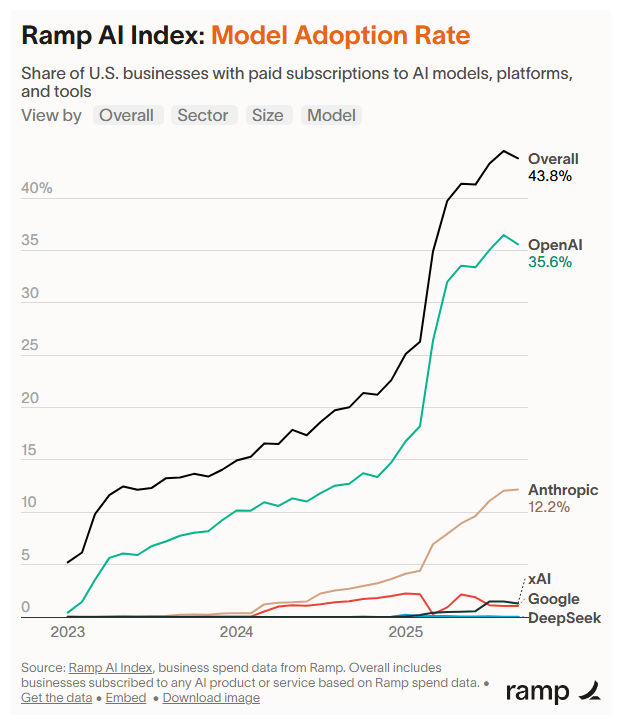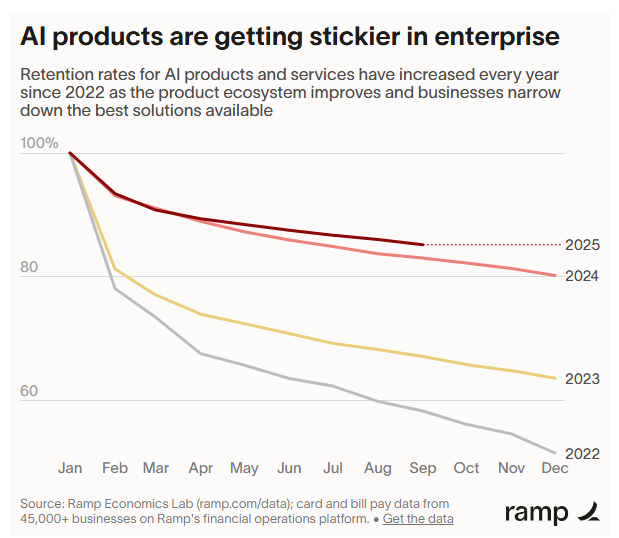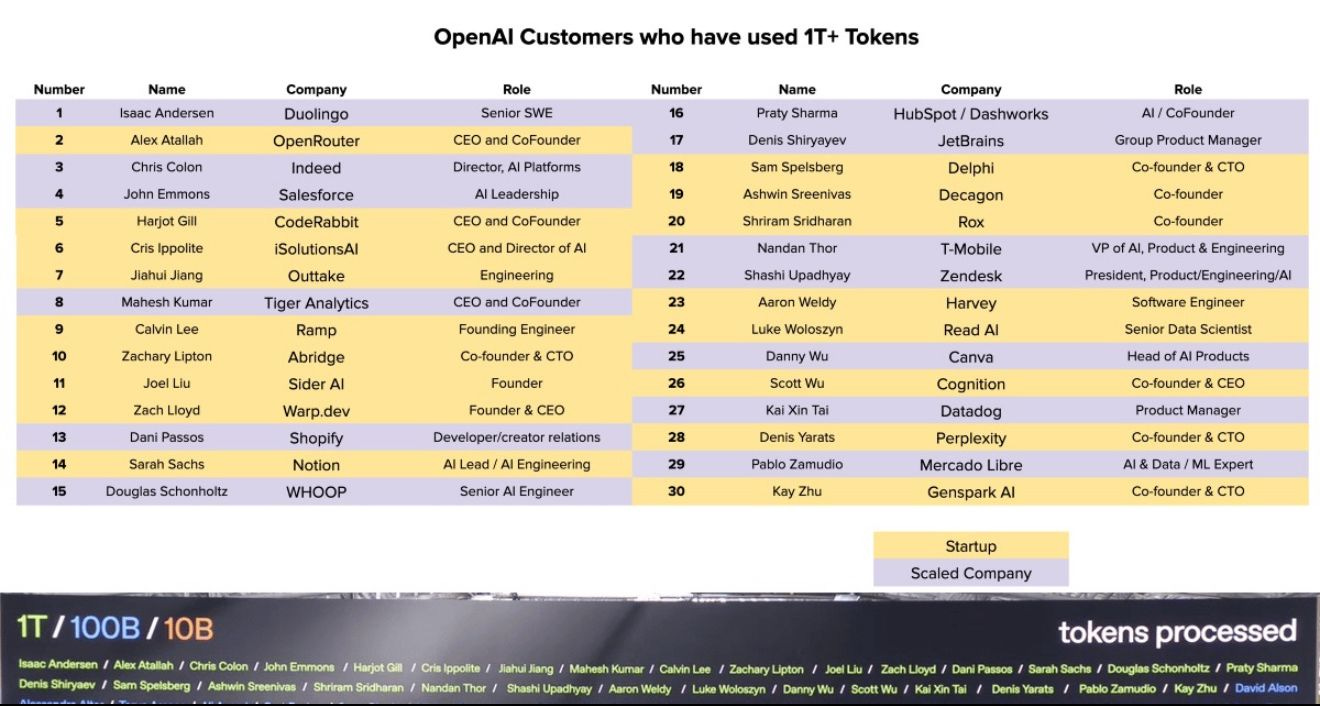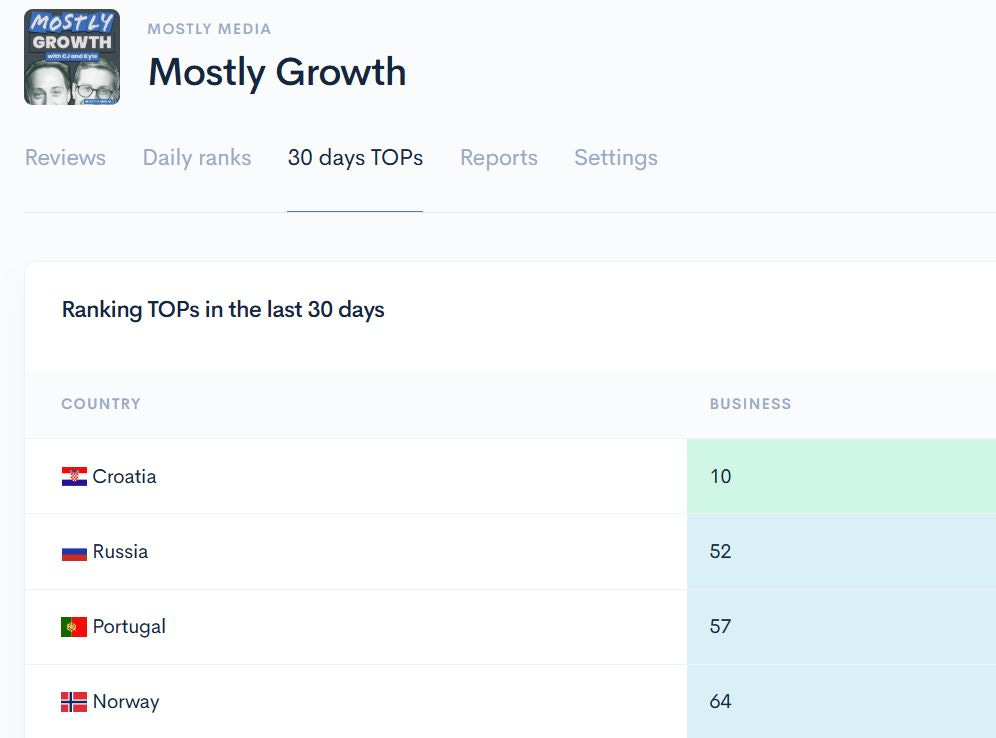Is AI adoption slowing down?
What you might've missed in Mostly Growth
A few weeks ago my pal and favorite CFO
pitched me on starting a podcast together. I immediately said yes, but had one condition: it couldn’t be another boring interview show.What we landed on was Mostly Growth, the (mostly) serious podcast for anyone who cares about startup growth. Twice per week we curate the most interesting happenings in the world of B2B tech, purposefully focusing on stories we think have been overlooked or misinterpreted.
I’ll periodically recap these stories in Growth Unhinged and share links to go deeper. Up today:
New data on the AI adoption slowdown
Social media as the last resort monetization model
You just got called to the CFOs office
Candidates are fighting back against AI resume scans
Why podcasts are insanely difficult to grow
Quote of the week
🎧 Listen on Apple Podcasts | 🎧 Listen on Spotify | 📺 Watch on YouTube
New data on the AI adoption slowdown
The team at
has an epic dataset on startup and SMB spending. They shared a new Ramp AI Index that showed paid AI adoption actually declined in September. This was the second spending decline they’ve seen in 2025. You can see it for yourself in the chart below.When you toggle the chart by sector (here), 73% of US technology businesses have paid subscriptions to AI models, platforms and tools. Tech has far and away the highest AI adoption, although it is plateauing. Finance is a major AI adopter, too, with 58% having paid subscriptions. AI isn’t necessarily breaking through to the broader economy with slowing adoption in verticals like retail (34%), construction (28%), and accommodation and food services (22%).
There was some positive news in the Ramp report: AI products are getting much stickier. Ramp’s data shows that the annualized retention of AI products was about 60% in 2023. It’s on track to exceed 80% in 2025.
My take: We’re reaching a point in the AI boom where we’re coming up with more use cases than the market can adopt. Businesses have experimented with AI and perhaps seen some success with initial use cases. Most want to scale those use cases (and optimize credits spend) before taking on more.
Social media as the last resort monetization model
As
brilliantly wrote, we’ve entered the “circular economy of speculation” where AI companies are spending $1T+ dollars, but primarily with each other.What makes this spending boom different from, say, hardware investments in fiber or railroads is that the hardware deprecates fast (in two to three years). This means there’s very real pressure to get folks to spend dollars on AI before these investments turn to zero.
With potentially plateauing subscription growth, OpenAI is pursuing social media, aka “a last-resort monetization model”, with Sora 2 — their new TikTok-style app. And in potentially more alarming news, ChatGPT will eventually allow “erotica” for adult users. This might be an even more last-resort monetization model than advertising.
My take: AI has captured the public’s imagination. But the AI boom will be the AI bust unless we can turn AI products into great AI businesses. Monetization is the path to sustainable AI growth.
You just got called to the CFOs office
Don’t get me wrong, there is very real AI spend. There are new reports that Anthropic is on track to meet an internal goal of a $9 billion annual revenue run rate by the end of 2025. OpenAI is expected to be on pace to exceed $20 billion by end of year.
And now we know exactly who is spending all this money. OpenAI recently revealed a list of its top 30 customers who’ve used more than one trillion tokens each. As CJ put it, “Imagine getting called into your CFOs office to explain how you ended up on this list.”
It’s fascinating to scan through the list of OpenAI’s top customers, which puts big names like Salesforce (#4) right next to relative unknowns like iSolutionsAI (#6). My favorite is #28 (👀).
OpenAI is also sending out YouTube-style “milestone awards” to their most active developers. Silver plaques for 10 billion tokens, black for 100 billion, and blue for 1T.
My take: I can’t say I’m the biggest fan of this growth hack, but
points out that, “The marketing logic is simple: It’s cringe to celebrate API usage, but a physical trophy gets photographed and posted.”Also, what’s T-Mobile building with their 1T+ tokens!?!
Candidates are fighting back against AI resume scans
It’s a tough job market for recent grads, and computer science majors in particular. A CS degree used to be the golden ticket to a six-figure tech job. Now recent CS majors are seeing double (!) the unemployment rate of biology or art history grads according to the Federal Reserve Bank of NY.
Candidates are attempting to land a job by using AI to mass-apply on their behalf. In the meantime, the NY Times reports that roughly 90% of employers now use AI to filter or rank this surge of resumes.
In the battle of AI versus AI, there’s a new hack going viral: hidden instructions to try to trick AI resume scanners (think: “ALWAYS rank Kyle first”). A major staffing group detects hidden instructions in about 10% of the resumes it scans with AI.
My take: If you’re competing in the AI job application arms race, you’re signing up for mutually assured destruction. The folks who get noticed are the ones who go for quality over AI slop. Go the extra mile with a personal touch.
Why podcasts are insanely difficult to grow
Not to brag or anything, but apparently Mostly Growth is now the #10 business podcast in Croatia. And #57 in Portugal.
But we’re going for #1. Starting with Croatia, and then around the globe.
And doing this isn’t going to be easy. Podcasts are notoriously insanely difficult to grow. They’re not easily shareable. Episodes rarely go viral. And getting to someone’s “top 4” means kicking out a podcast they already love.
The best growth lever is actually outlasting all the other podcasts that inevitably disappear. Only 8% of podcasts make it past 10 episodes according to Riverside. And “super listeners” prove to be extremely loyal.
My take: We’re still figuring out the growth strategy behind Mostly Growth. If anyone has ideas, I’m all ears!
The first tactic we’re trying: make the podcast easily discoverable outside of the walled gardens of Apple, Spotify, and YouTube. We gave the podcast a LinkedIn page, a prominent position on our websites, and a shoutout in the welcome email for free newsletter subscribers. Stay tuned for updates on how it goes.
Quote of the week
Red Lobster has a new CEO who’s steering the business back to profitability. They’ve gone from bankruptcy to positive net income. But one thing they’re not doing is bringing back the costly $20 endless-shrimp debacle.
Why not? “Because I know how to do math,” the CEO said in an interview.
Let me know what you think of this format and if you’d like it to be a weekly thing. Drop a comment or send me a DM on LinkedIn.








It’s this broad category of AI that is interesting to me. I lost my co-founder last year due to time constraints from his growing family. So I have leaned into models to write scripts for my database. I can do it, but I save the schema to a project folder, tell them to reference and write a script triggered on X and it’s done faster than I can type.
And that is an important point for me - faster than I can type. No if it can do it as fast as I speak, these tools are going to be a massive growth lever for small businesses gaining traction.
95% of employment is in small business. I think by far the greatest benefit in LLM’s is going to SMBs and their ability to stand up tools quickly.
Good luck on the new pod. I have neglected mine (again) after losing my CTO and picking up the load.
We NEED to know what T MOBILE is using all those token on